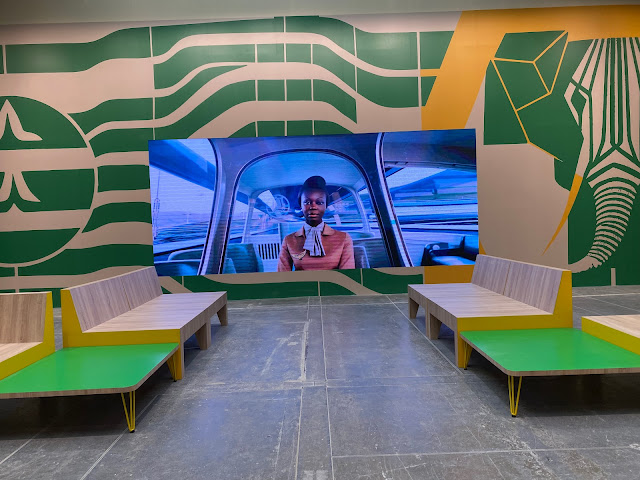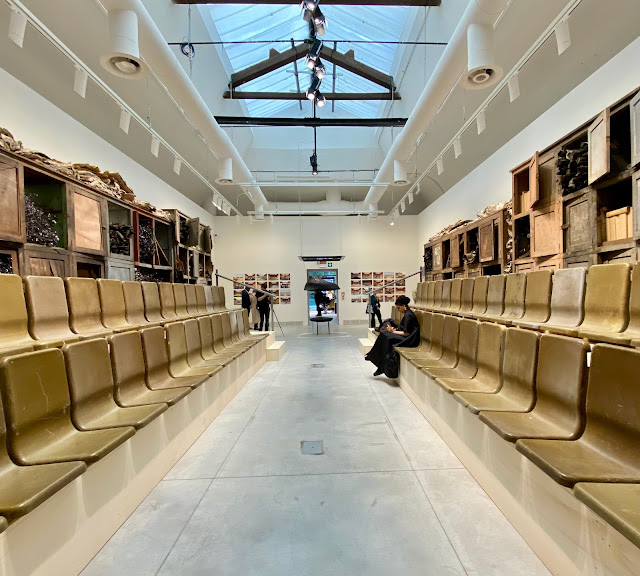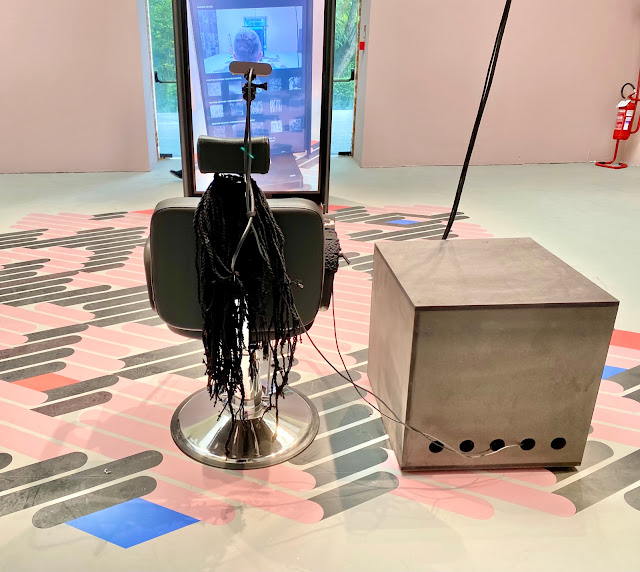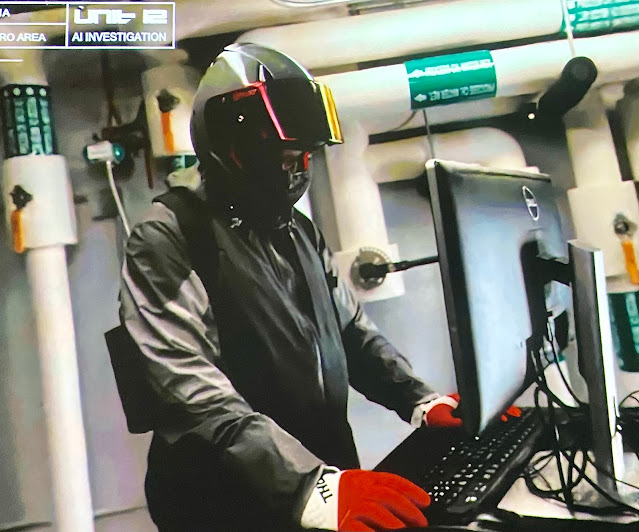"Architects have a unique opportunity to put forward ambitious and creative ideas that help us imagine a more equitable and optimistic future in common”.
Lesley Lokko
curator
#BiennaleArchitettura2023 - 18th International Architectural Exhibition
Central Pavilion - The Laboratory of the Future
Giardini
The Biennale Architettura 2023 - until November 26 - entitled The Laboratory of the Future is curated by academic, educator and novelist Lesley Lokko and chaired by La Biennale di Venezia president, Roberto Cicutto. The exhibition is organised in six parts and includes 89 participants, over half of whom are from Africa or the African Diaspora and for the first time ever, nearly half of participants are from sole or individual practices of five people or less.
“Central to all the projects is the primacy and potency of one tool: the imagination. It is impossible to build a better world if one cannot first imagine it. Threaded through and amongst the works in both venues are young African and Diasporan practitioners, whose work engages directly with the twin themes of this exhibition, decolonisation and decarbonisation, providing a snapshot, a glimpse of future practices and ways of seeing and being in the world. (…) We have deliberately chosen to frame participants as ‘practitioners’ – and not ‘architects’ and/or ‘urbanists’, ‘designers’, ‘landscape architects’, ‘engineers’ or ‘academics’ because it is our contention that the rich, complex conditions of both Africa and a rapidly hybridising world call for a different and broader understanding of the term ‘architect’."
Lesley Lokko - curator
ACE/AAP
Olalekan Jeyifous
In the wake of the Pan-African movement and African decolonization, imperialist infrastructures devoted to economic exploitation and resource extraction are rapidly dismantled, while local environmental groups throughout the continent consolidate into what is known as the African Conservation Effort (ACE).
Barotse Floodplain’s AAP imaginary lounge is ACE/AAP
To repair the damage done to the African continent’s ecoregions by former colonial powers, the African Conservation Effort (ACE) applied Indigenous knowledge systems to developing advanced networks that synthesised renewable energy and green technologies. Chief amongst these was the All-Africa Protoport (AAP).
AAP is now a network of sprawling low-impact, zero-emissions travel complexes situated off the coasts of major ports throughout the world. Until recently, there were twelve AAPs located in the following cities: Lagos, Mombasa, Port Said, Dar es Salaam, Durban, Salvador de Bahia, New York, Los Angeles, Port-Au- Prince, Barranquilla, Havana, and Montego Bay. A new AAP complex completed in 1972, unlike its coastal counterparts, is embedded somewhat controversially in the Barotse Floodplain in Zambia’s Western Province. The Barotse Floodplain’s AAP imaginary lounge is ACE/AAP presented in The Laboratory of the Future.
photo - Andrea Avezzu - courtesy - La biennale di Venezia
Silver Lion Award
Promising Young Participant
Olalekan Jeyifous, won the Silver Lion Award for the multimedia installation that explores a worldbuilding practice that expands public perspectives and imaginations, offering visions of a decolonized and decarbonized future.
Counteract
Kere Architecture - Diebedo Francis Kere
The entire continent of Africa is responsible for less than 4% of the world’s greenhouse gas emissions. This startling fact gives pause. A moment in which to look and feel. To consciously create goals in line with needs determined from within. To find modes of building that do not replicate loss but rebuild ancient knowledge. To find knowledge that is not worthless but rather constitutes an invaluable wisdom that can fuel hope. To do just that, Counteract celebrates West African architectural prowess of the past, takes stock of today’s situation and nudges us towards a different approach. It is a viable and fantastic vision of architecture.
Kere Architecture considers materials and skills required to build buildings that are not too hot or cramped, dwellings that existed in a time before the current status quo. Kere Architecture re-centres the value of this embedded knowledge, proposing it as a ‘counteract’ to the chase for modern architecture.
Native(s) Lifeways
Hood Design Studio
Walter Hood - Alma Du Solier
Michael DeGregorio - Paul Peters
Michael DeGregorio - Paul Peters
As shown in the exhibition we propose a new Arts Lifeway in the creek of Phillips, South Carolina, enmeshed with grasses and reeds. Basketmaking pavilions evince their logic of production and ornamentation along a sweetgrass walk connecting the communal landscape. Large rice-toting baskets that men used to harvest inspired the columns, while the ornamental basketmaking of children and women influenced the roof and awnings. Constructed of renewable wood harvested from the overgrown, the houses and walkway speak to a continued occupation of native landscape.
The African Post Office
Sumayya Vally - Moad Musbahi
As a space for sorting and processing, the African Post Office brings together different ‘posts’ from across the continent and the larger lagoon of Venice. The project develops an intercontinental bureaucratic apparatus using the simple technology of the post. It operates in two dimensions: as a spatial reinterpretation of the post as a pole, and as the infrastructural mechanism of a postal network that considers routes of prior passage.
Moad Musbahi and Sumayya Vally
Urban American City (UrbanAC) - Toni L. Griffin
There is an undeniably dystopic past at the core of every African American’s history. However, this narrative is not exclusively situated in pain. Within every Black space and body that holds this trauma, there exists an element of the fantastic that breeds resilience and creativity. Between the milestones of Juneteenth and the Civil Rights Movement, Blacks in Northern America migrated to segregated cities and built prosperous economies, producing extraordinary Black wealth, technologies, and culture. However, as Sylvia Wynter describes, our value has always been “measur[ed]… according to the single yardstick of technoscientific accomplishment that is defining the contemporary West’s [and White] ‘mechanical perfection’.”
Land Narratives — Fantastic Futures exposes the lost histories and unrecognised imaginations of creativity born in spite of the segregation and land vacancy found in ‘Black Belt’ neighbourhoods of Chicago’s South Side. It develops new, multiple, and wayward ‘yardsticks’ for identifying and working with previously unmeasured cultural values.
Parliament Of Ghosts
Ibrahim Mahama
Parliament of Ghosts was conceived for The Whitworth art gallery in Manchester as part of the Manchester International Festival in 2019. The work originally addressed historical ideas around materials and issues of colonial exploitation, but it was subsequently transformed into the architecture of Red Clay in Tamale, Ghana. The set-up allows objects and ecosystems to coexist with architectural form, from a conceptual, philosophical, and physical point of view. Memories are excavated through the placement of non-human forms while young audiences are encouraged to acquire new perspectives on their relationship to architecture.
The space was inspired by both the residue of the Gold Coast Railway infrastructure and abandoned modernist buildings from the 1960s Nkrumah’s Voli-ni in Tamale. In The Laboratory of the Future, a series of questions are posed. How do we restore memories to which access was denied? How do we excavate the past in order to build new futures?
Ibrahim Mahama and Lesley Lokko
Softlab @ PSU - Felecia Davis
Forming a space between two words, ‘dreadlock’ is a word of uncertain etymology. For English speakers, this is clearly a portmanteau, two words making one. Dread, fear, anxiety about the future, but also awe or reverence. And the word ‘loc’, Germanic in origin, which refers to a curl or strand of a person’s hair that curls together, or the property of matted hair, tangled beyond untangling, knotted forever.
This installation roves from knowledge and language that the weaving hand knows into computational and digital knowledge systems. There are experiments with locking techniques related to felting in textile practice and digital combing/sorting to make a hybrid threshold. The digital threshold space in the installation uses machine learning trained on a designed database of global hair textures. The physical threshold is a knitted isacord passage made of felted dreadlocked material.
Djali
Basis with GKZ - Kibwe Tavares - Zenna tavares
This work is a narrative exploration into counterfactual pasts and hypothetical futures, fusing the mediums of film, sound, and computation to transport audiences beyond the constraints of the present. Djali explores storytelling and visualisation of hypothetical worlds, narrated from the perspective of an artificial intelligence present in them. Experientially, Djali is interactive, building on advances in natural language processing, computer vision, and computation to simulate our human ability to mentally explore possible and even impossible worlds with our mind’s eye.
Zenna Tavares and Gaika Tavares
Adjaye Associates - Sir David Adjaye OBE
The Adjaye Futures Lab features a field of physical models paired with narrative films. The selected projects showcase narratives that emerged outside of the dominant canon, such as the Thabo Mbeki Presidential Library and its precolonial inspiration, and the Edo Museum of West African Art/Creative District, which aims to reconstruct, resurrect, and reposition ancient Benin City as a powerhouse of cultural output. These are narratives that speak to an ongoing quest to define, amplify, and encourage diasporic connection and cultural production, expressed through the Newton Enslaved Burial Grounds and Museum project and the Africa Institute in Sharjah.Collectively, the selected projects speak to notions of placemaking, identity, memory, and meaning as central to the design process with the ambition to create structures conducive to positive forms of human transformation.




















